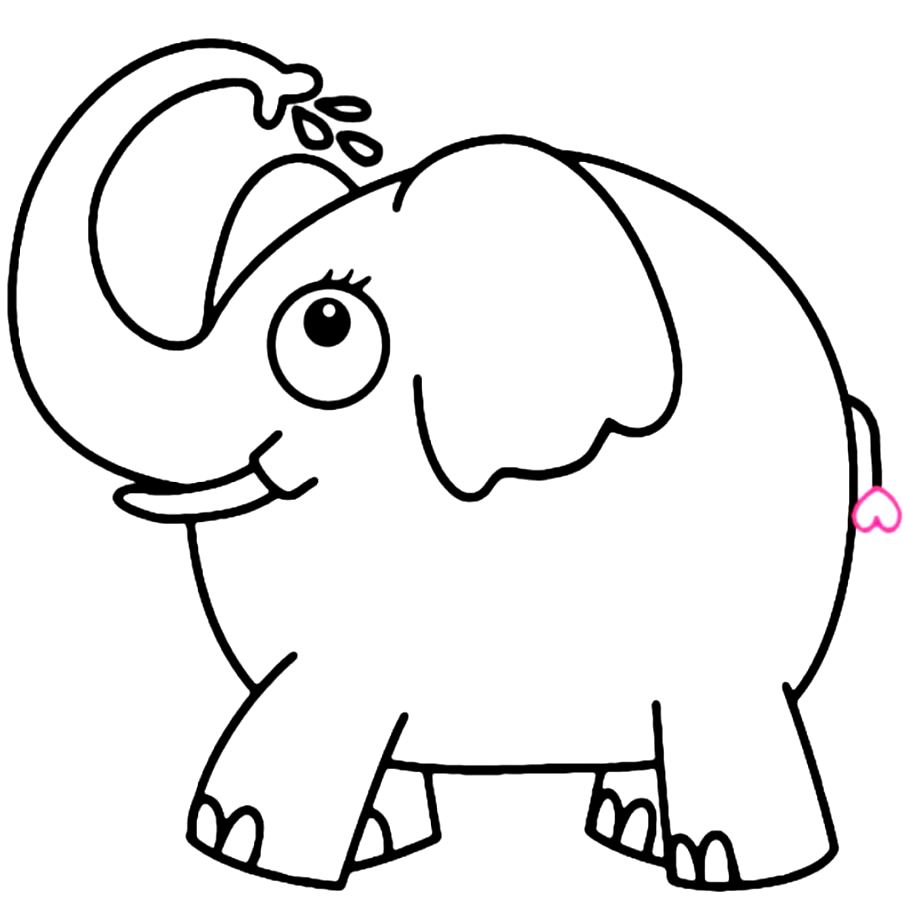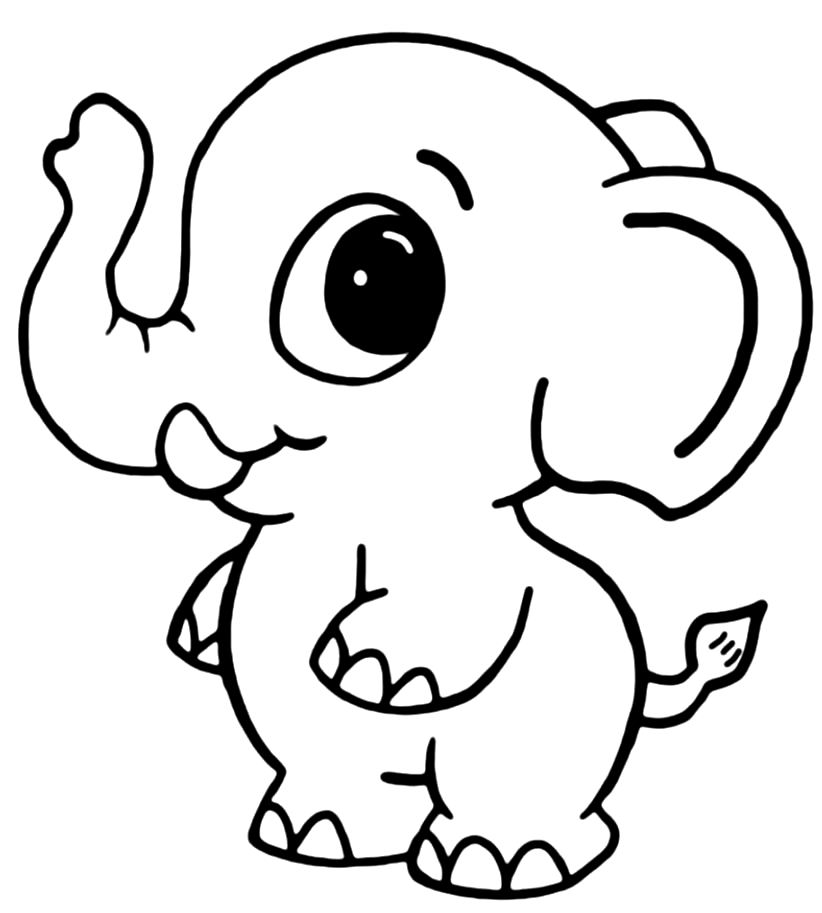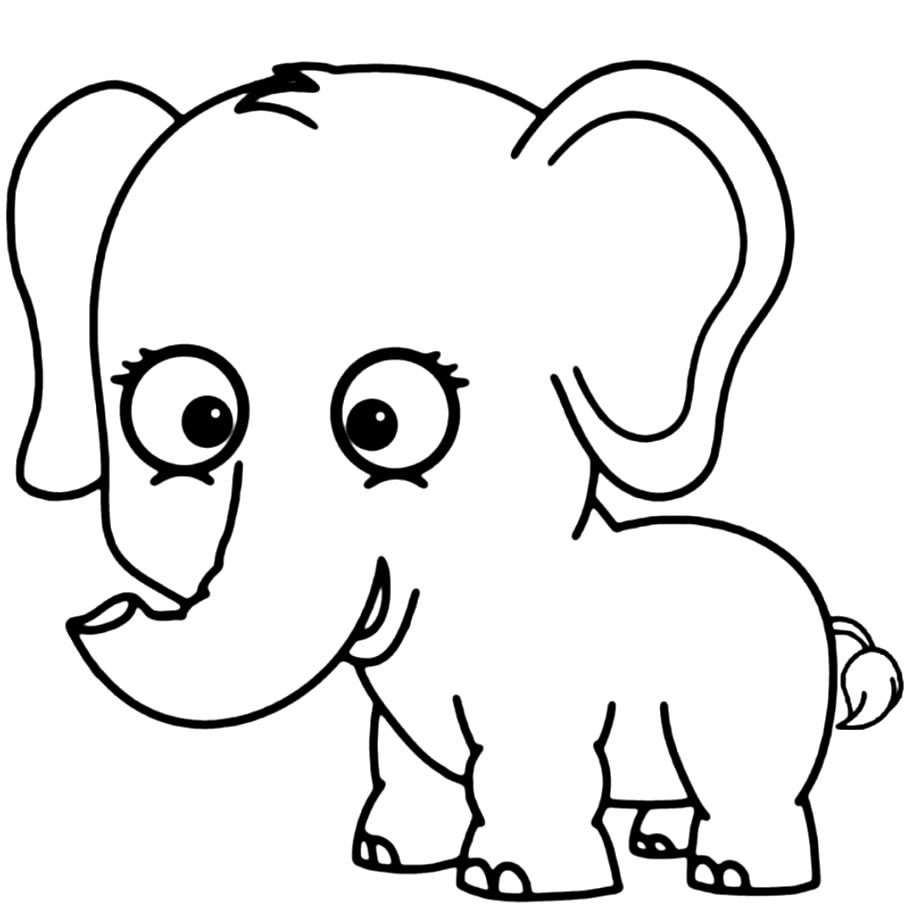Elephants
Elephant coloring pages are so fun because they are big and have trunks. Elephants may look huge, but they are very sweet and calm animals. It is one of the largest living animals on earth. Before we work on the coloring page, we need to prepare our pencils. Elephant is a gray animal. I can say that especially gray black and blue pencils will be very useful for us. If the pencils are ready, it's time to choose an elephant coloring page. Let's start..
Elephants coloring pages (free printable books)
Elephant species include the African Savannah Elephant, Asian Elephant, Indian Elephant, African Forest Elephant, Ceylon Elephant, Borneo Elephant, and their ancient relatives, the Mammoths. However, the mammoths became extinct during the Ice Age.
Elephants and Their Characteristics
Elephants are giants among animals. The height of the elephant is 2-4 m, and its weight is 3 to 7 tons. Elephants in Africa, especially those in the savanna, usually weigh between 10 and 12 tons. The strong trunk of the elephant is covered with deep wrinkles (up to 2.5 cm) of brown or gray color. Elephant cubs are born with a rare hair, adult individuals are practically devoid of hair. The head of the animal is very large, with noticeable ears. Elephant ears have a large enough surface, thin edges and thick surfaces, they are good heat exchangers. The shaking of the ears makes it easier for the animal to cool its body. Elephant's leg has 2 knee caps. Such a structure has made it the only mammal species that cannot jump. In the middle of the foot is a layer of fat that spreads with every step, allowing these powerful animals to move almost silently. An elephant's trunk is an amazing and unique organ consisting of a fused nose and upper lip. Tendons and over 100,000 muscles make them strong and flexible. The proboscis performs a number of important functions for the animal, such as breathing, smelling, touching and bringing food to the mouth. Another feature of their appearance is their teeth. They grow throughout life, the stronger the tusks, the older the elephant.
The elephant's tail is the same length as the hind legs. The tip of the tail is covered with stiff bristles that help repel insects. The voice of an adult elephant is deafening. The lifespan of the elephant is about 70 years.
Elephants can swim very well and love water games, and their average movement speed on land reaches 3-6 km/h. When running short distances, the elephant's speed sometimes increases to 50 km/h. African elephants are found almost everywhere throughout the warm African continent. Elephants live in Namibia, Senegal, Kenya, Zimbabwe, Guinea, Congo, Sudan, the Republic of South Africa, Zambia and Somalia. Unfortunately, elephants are slaughtered by poachers for their tusks and are in danger of extinction. The elephant lives in any landscape, but prefers the savanna, trying to escape from the desert region and too dense tropical forests. Indian elephants as well as northeast and south India, Thailand, China and Sri Lanka Island; It lives around Myanmar, Laos, Vietnam and Malaysia. Unlike their relatives from the African continent, Indian elephants prefer to settle in woodland, tropics and regions with thick bamboo bushes.
Elephants are the largest living land mammals. Three species living today are described: the African Savannah Elephant, the African Forest Elephant, and the Asian Elephant. Elephants, which have a long lifespan like humans, have a life expectancy of about 60-70 years. With a gestation period of 22 months, elephants are similar to humans and other apes in that they provide long-term care and breast milk (at least two years) for their young after birth. They have the largest brain and cerebral cortex among all terrestrial mammals. It is a highly social species and has complex communication systems.
Evolutionary History and Taxonomy
Elephants are in the family of phyla (Elephantidae) under the order Proboscidea. Today, there are three species living under the Elephantidae (elephants); African savanna elephant (Loxodonta africana), African forest elephant (Loxodonta cyclotis) and Asian elephant (Elephas maximus). There are differences in appearance between elephants living on two different continents. Elephants living on the African continent have a larger body and wider ears than those on the Asian continent. However, African elephants have a concave back, while Asian elephants have a convex back and have a hump-like protrusion on their heads.
Ecological Distribution and Habitat
Most of the Asian elephant population (60%), which is distributed in Nepal, Bhutan, Bangladesh, Myanmar, Thailand, Malaysia, Cambodia, Laos, Vietnam, China, Sumatra island and Sri Lanka, is found in India. Although African elephants are distributed in the sub-Saharan region of the African continent, African forest elephants are concentrated in Central Africa.
Population and Conservation Status
There has been a long-standing conflict between elephants and humans. The settlements established on the migration routes of elephants cause the elephants passing through these roads to consume agricultural products. But this situation can bring the end of the elephants. People who set up their agricultural fields on the migration route of elephants trap many elephants every year to protect these areas. This, in turn, brings with it the division and vulnerability of elephant families, the inability of elephant groups to reach wet and grassland areas, which lost their leaders, and as a result, elephant deaths.
Social Structuring
Elephants are very social animals. Like other social mammals, elephants live in groups. What distinguishes elephants from other social mammals is that groups of elephants can unite and separate from time to time (Eng: "fusion-fission"), that is, elephants form variable herds. This creates a multi-layered community among the elephants; The second layer is formed by adding sisters or other family members to the first layer consisting of mothers and offspring. In the third layer, other mothers and offspring are added to this group. These mothers often carry a kinship relationship between them. The fourth tier of many families, clans, are groups that share the same areas of life, food, and water.
Elephants migrate during times of drought to find new water and food sources. In this process, member changes can take place, mostly in the third and fourth layers. Member changes in this phenomenon called fusion-fission depend on the socioeconomic status of the groups, population size and age distribution.












